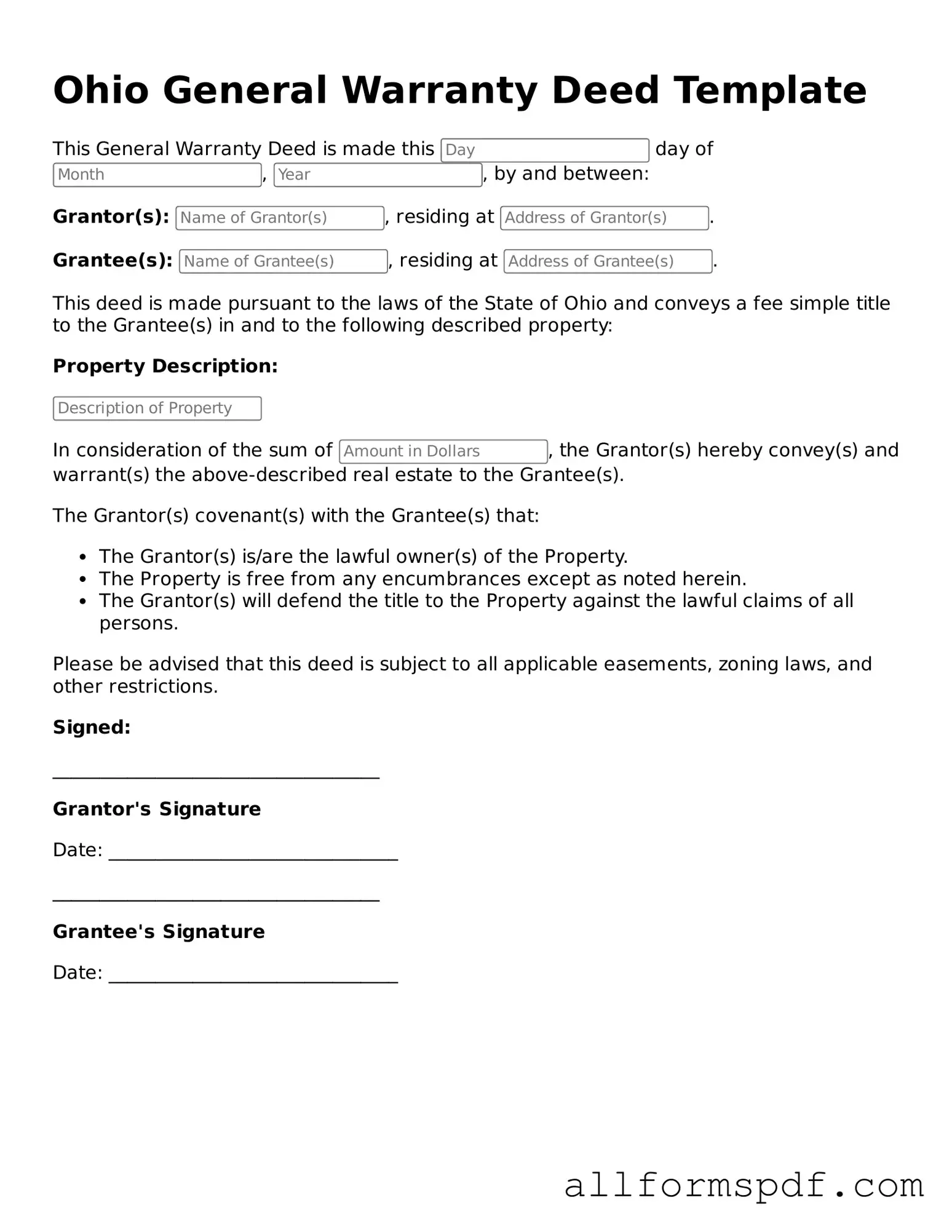Completing an Ohio Deed form requires attention to detail. One common mistake is failing to include the correct names of the parties involved. It is essential to ensure that the names of both the grantor (the person transferring the property) and the grantee (the person receiving the property) are spelled correctly and match their legal identification. Any discrepancies can lead to complications in the transfer process.
Another frequent error is neglecting to provide a complete legal description of the property. The legal description must accurately reflect the property’s boundaries and location. Omitting this information can result in confusion or disputes over property lines.
Many individuals overlook the importance of signing the deed. Both the grantor and any necessary witnesses must sign the document for it to be valid. In some cases, notarization is also required. Failure to obtain the necessary signatures can render the deed ineffective.
Incorrectly dating the deed is another mistake that can create issues. The date on the deed should reflect the actual date of signing. An inaccurate date may lead to questions about the legitimacy of the transfer.
People often forget to include the consideration, or payment, for the property. This section should clearly state the amount exchanged. Leaving this blank can raise concerns regarding the validity of the transaction.
Additionally, some individuals fail to check for any existing liens or encumbrances on the property before completing the deed. Ignoring this step can lead to unexpected legal challenges or financial obligations for the new owner.
Another common oversight is not filing the deed with the appropriate county recorder's office. After completing the deed, it is crucial to ensure it is recorded to make the transfer official. Neglecting this step may result in difficulties in proving ownership in the future.
Some people mistakenly assume that using a generic deed template will suffice. Each property and transaction may have unique requirements. It is essential to tailor the deed to fit the specific circumstances of the transfer.
Finally, individuals sometimes fail to seek legal advice when needed. Consulting with a real estate attorney can provide valuable guidance and help avoid common pitfalls. Taking this step can save time and prevent complications down the road.
